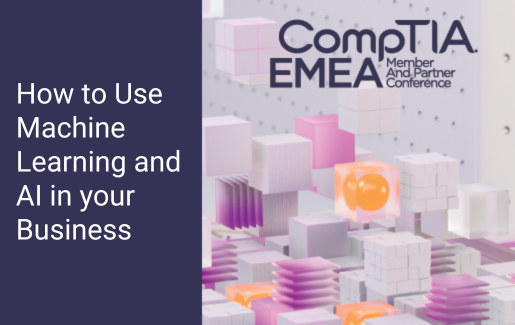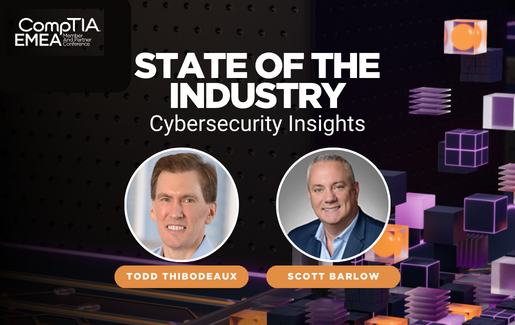
There’s a lot of confusion and misconceptions about artificial intelligence (AI) and how businesses can leverage AI functionality into their business—or if they even should.
Clients are asking questions and MSPs are struggling to find the right answers. The truth is we see AI being used in applications every day –think chatbots, digital assistants, large language models (LLMs) to name a few.
And they are thirsty for more: 63% of companies plan to increase or maintain AI and machine learning spending in 2023, according to Verta. But implementing AI into your business requires time, patience and a well-planned strategy, according to Hollie Whittles, information security and HR director at Purple Frog Systems and vice chair of CompTIA’s UK & Ireland Community.
Start With the Data—and a Plan
So where to start? Extracting more analysis and insights from your current data is a big opportunity for most businesses, said Whittles during a session at the CompTIA EMEA Member & Partner Conference in London.
“If you’ve got data, you could be making better use of that data in order to make better decisions,” she said, citing an example in which her firm leveraged machine learning to help a national chain of gyms to better understand what equipment its customers were using and when.
“Identifying data is easy. The hard part is understanding what you can do with it,” she added. “You still need an AI strategy. Ask what is the problem that the business needs to solve, then learn to understand the possibilities of machine learning and create an architecture. Identify partners and vendors to work with and set a budget. There are quite a few steps, but if you go through them, you will see results.”
For MSPs thinking about AI, don’t assume that your data is accurate, warned Whittles. “Wherever humans are involved there is the element of error. If you scale that, there could be misreporting. Analysis and cleaning of data is vital,” she said. “You have to have someone who is good with data science or data analytics.”
What Are You Looking to Solve?
Other AI-powered applications for your business could include smarter email marketing, chatbots and reducing repetitive and mundane tasks.
“If you’re looking to eliminate back and forth, AI can help you. Isn’t it better to remove data entry from a human to give them back time and make better decisions,” Whittles asked. “Someone told me that it took their company 29 days to enter data and they only had one day to analyze it. [With AI], the data could take 45 seconds and you could have the whole month to analyze it.”
Finally, remember to start with the end in mind: What are your pain points, what are you trying to solve? And implement AI within your own organization before you try to package something as a solution for your clients, Whittles said.
“If you try to run before walk, you will fall over. Get your own house in order before you can help others,” Whittles said. “It might be once you figure out something that benefits you, it could also benefit your clients too.”
Whittles hopes that the CompTIA Emerging Technology Committee can help develop some resources for MSPs and she notes that fellow CompTIA members have already created some insightful articles. For example, the CompTIA AI Industry Advisory Council created the Ethically Operationalizing AI and Machine Learning whitepaper.
The Emerging Tech Committee plans to meet monthly to discuss AI-related topics as a group. At the EMEA conference, members suggested automation, data protection and how to leverage AI to identify business problems that clients may have but the MSP-facing contact may not know about.

 Add CompTIA to your favorite RSS reader
Add CompTIA to your favorite RSS reader

